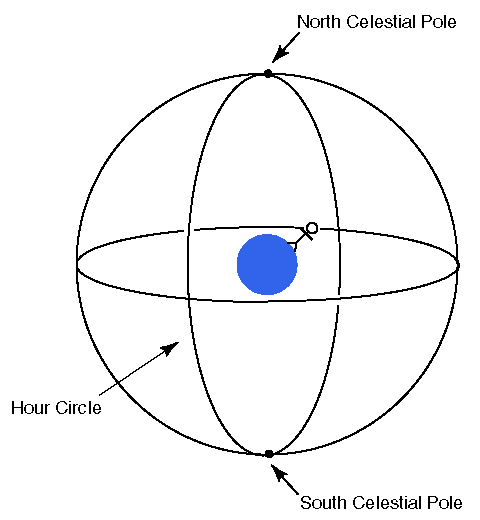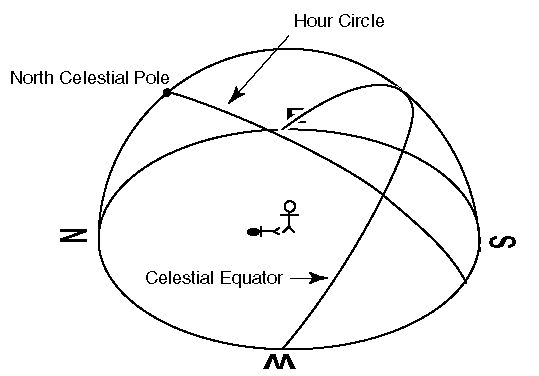

Hour circles are great circles which run from the north celestial pole straight to the celestial equator (which they cross at a right angle) and continue to the south celestial pole, and back around to the north celestial pole.
In our sky, hour circles would be imaginary lines running from the north celestial pole to the south celestial pole (which is below the horizon).

If we project a set of hour circles onto our sky map the result is:

You recall that diurnal circles were circles parallel to the celestial equator:

The combination of diurnal circles and hour circles allow us to make a grid for the celestial sphere. The grid is thought of as connected to the sphere, so stars have fixed locations relative to the grid. (This is in contrast to the altitude and azimuth of a star, which change as the star rises, culminates, and sets.)

There is less clutter if I display this grid without the stars (although locating stars is the purpose of this grid).

This celestial grid is analogous to latitude and longitude on Earth. Hour circles, running from pole-to-pole, are analogous to lines of constant longitude. Diurnal circles, running parallel to the equator, are analogous to lines of constant latitude.